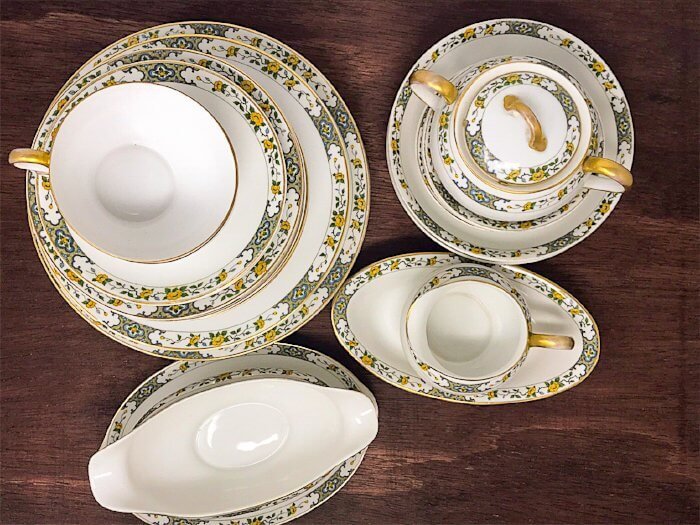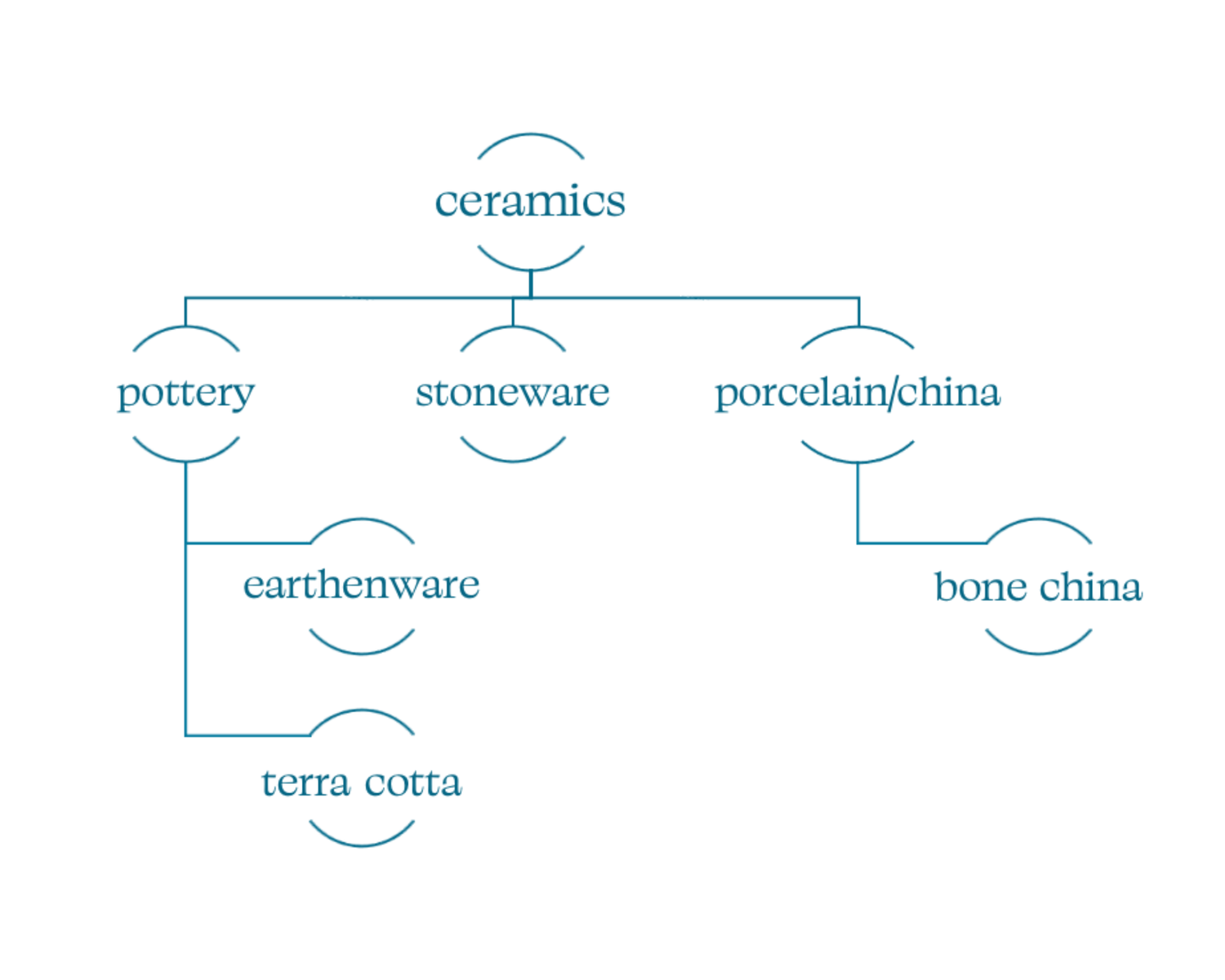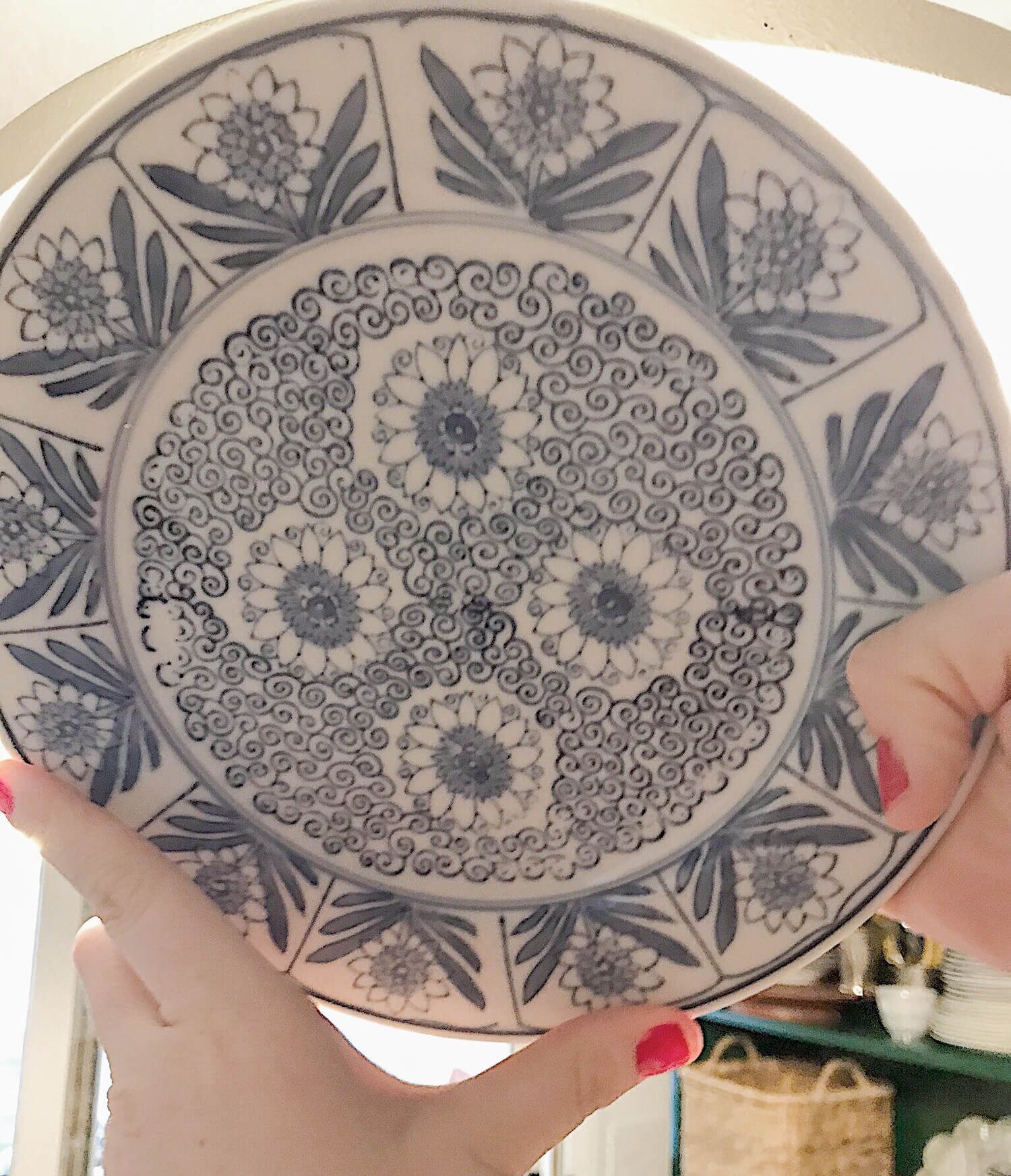What is the difference between china and porcelain?
I thought it might be helpful if we start to explore some variations of products and learn about the basics of terminology.
China, Ceramics, Porcelain and Bone China....all these terms get super confusing. So, let's do a little flow chart here to help.
Even more confused? Okay, let's define some stuff.
Ceramics is a broad word used for any mineral that is heated and hardened. So, therefore, all other terms fall under the umbrella of "ceramics".
"Pottery" is also a very general term used to define ceramics made of common clay. They are usually made artisans and fired at a lower temperature. Pottery that has historic importance is referred to "Earthenware." Items of a certain color that are fired at a lower temperature without a glaze are usually referred to as "Terra Cotta".
"Porcelain" is essentially the same product as "China". China simply refers to porcelain that is from the country, China. In Europe, they prefer to use the term "Porcelain" and here in the US, we prefer to use the term "China".
"Bone China" starts the same way as porcelain china but they add bone ash during production.
That's all fine and good but now you have a plate in your hands so how do you know what you are holding?
I think the pottery portion is pretty self explanatory but how are you suppose to know if you are holding porcelain china? How do you know if something is porcelain china or ceramic?
The absolute easiest way to figure this out is to hold it up to the light.
If you can see through it, it is bone china.
If you can't, it is another type of ceramic.
The easiest way to identify bone china from fine china is the color. Because of the bone ash that is added, bone china tends to be a creamier color. A more pure white color is likely to be fine china.
There are many other ways to identify the differences between ceramics, like the sound the plate will make when your nail dings it. However, this should serve as a great foundation for what you will encounter at flea markets and thrift stores.
What are your favorite methods to identify ceramics? I'd love to hear them!





